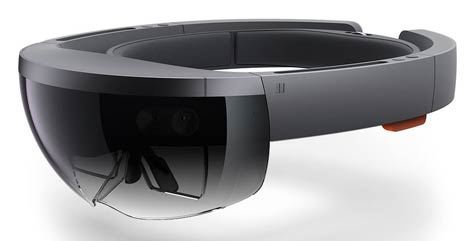I was just taken through an update on Microsoft’s coming holographic technology, HoloLens, and it still looks amazing. I’ve demoed it several times and it is obvious that it has game potential but I wouldn’t buy it for gaming, at least not in its current form. However, as a business tool, with the right applications, it could be a very powerful training, support, general education or design tool in its first implementation.
This product came to market as a tool developed largely to place scientists digitally on Mars, suggesting that future space exploration might be done by robots and the people would stay at home. Its hidden value is collaboration between two remote folks working on the same project.
HoloLens and Gaming
I see three big problems with using this as a gaming product, one of which may actually be fixed when the product makes it to market. The one that will likely be corrected is hand controllers that emulate the games you’d be playing. You’d need some form of controller, and that isn’t part of the initial release, but likely will be part of the final product. The second problem is field of view. Currently, it is like you are wearing, and can only see through, glasses. While the visor surrounds you, the display surface is on a glasses-like screen inside the visor. This reduces the ability for game elements to appear in the periphery, reducing substantially the reality necessary to make this fly as a game system. Finally, and most obviously, is the price. Typically, game systems sell poorly over $500; at $3K, this is well beyond what most parents will be willing to pay and more in line with what kids likely pay for their first car.
HoloLens and Business
However, none of these problems limit significantly HoloLens use in business. Since most training and service functions for the product have the user focused on something in front of them, the limitations to the field of view aren’t important. And since they will typically be holding a real tool, the utility of a controller would be very limited, and in most instances you wouldn’t need one.
For creation, you’d typically use this for rendering something in 3D space, and the virtualized image would be far cheaper for modeling than building one by hand or even using a 3D printer. And you can interact with it without controllers, thanks to the built-in cameras. You can even place the rendered objects in real rooms or against real landscapes, both at a distance and close up.
What makes this product a bit different from augmented reality and virtual reality is its ability to blend the artificial with the real with a high degree of tolerance, and to connect remote people to a third person or a robot actually in close proximity to the project. VR is good for emulation, and AR is good for labeling but if you want, with high precision, to connect people remotely to a physical object or have three people work on a digital model in 3D space with high tolerance, there is nothing like HoloLens.
The initial cost of the product is less intimidating for a business use. Typically, technician might carry several tools in a similar price range, particularly if what they are fixing requires extensive testing. I expect that it will generally be used for design and only in service for custom-built unique products initially because many people that service this class of offering see the first one the day they first have to service it.
Wrapping Up: Why HoloLens Is Even More Unusual
HoloLens is rather an unusual offering. While it is initially presented as having a major gaming opportunity, it will be far more useful for business. I also think, at some point, that this could replace all forms of video conferencing. In effect, with the right applications and real-time rendering, it could place the entire conference where you are and put the presentation on your wall. Simply by turning and looking at another attendee, you could chat with them privately and the speaker would be able to see the virtual representation of all of the attendees rendered in their space, though they could digitally remove hecklers. Physical objects would be scanned and shared real time as if they were in the room, and everyone could tailor the experience to their needs. For instance, a speaker afraid of large audiences would only see those members they were actually engaging with.
I think it will be years before we fully realize the potential of HoloLens, including gaming, but for now it likely will be, when it becomes available, the most amazing tool for remote collaboration on real objects in the market.
Granted, eventually, it could also be pretty great for keeping the kids entertained in the car, though drivers should likely leave it at home for now.
Rob Enderle is President and Principal Analyst of the Enderle Group, a forward-looking emerging technology advisory firm. With over 30 years’ experience in emerging technologies, he has provided regional and global companies with guidance in how to better target customer needs; create new business opportunities; anticipate technology changes; select vendors and products; and present their products in the best possible light. Rob covers the technology industry broadly. Before founding the Enderle Group, Rob was the Senior Research Fellow for Forrester Research and the Giga Information Group, and held senior positions at IBM and ROLM. Follow Rob on Twitter @enderle, on Facebook and on Google+



